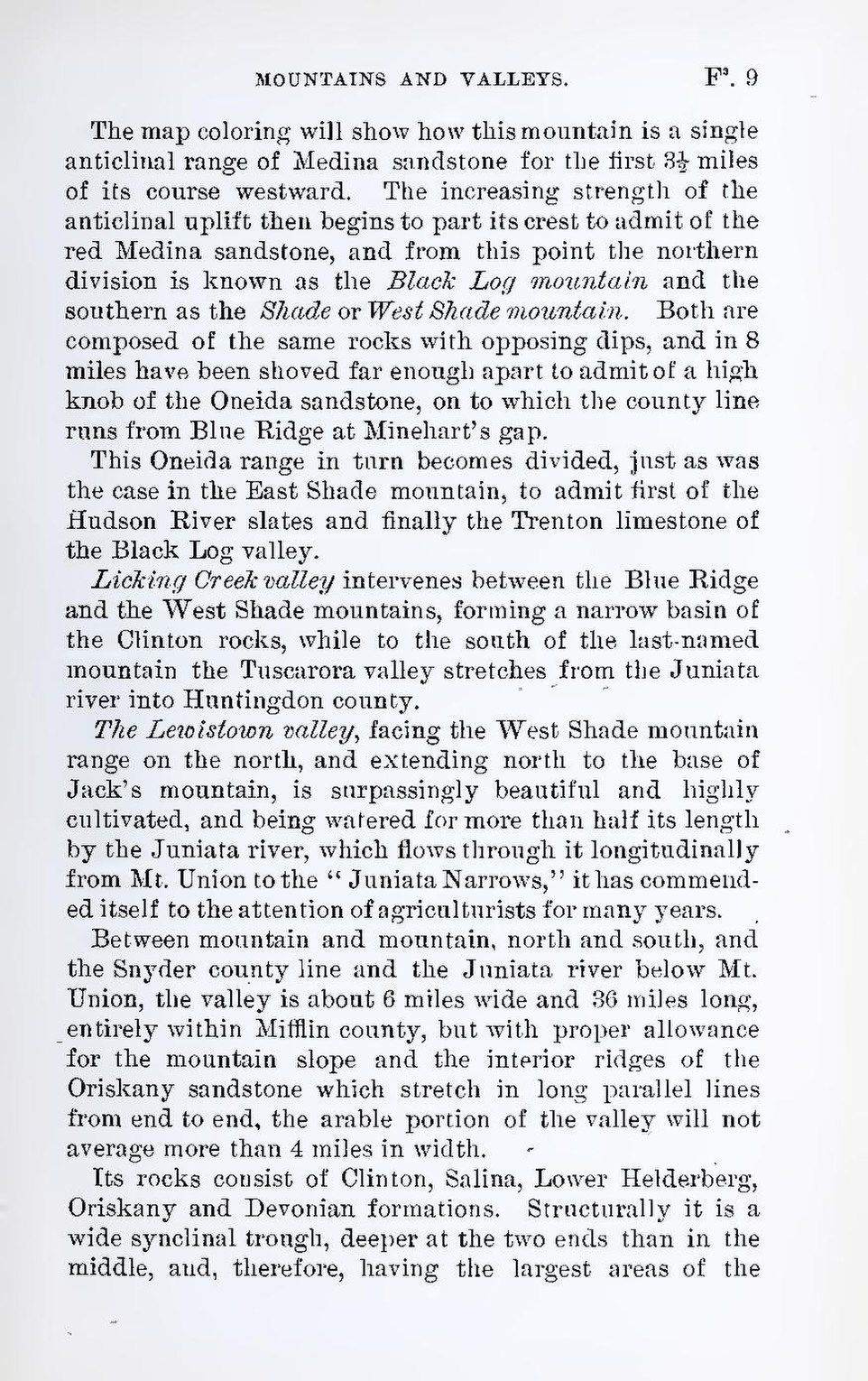The map coloring will show how this mountain is a single anticlinal range of Medina sandstone for the first 3½ miles of its course westward. The increasing strength of the anticlinal uplift then begins to part its crest to admit of the red Medina sandstone, and from this point the northern division is known as the Black Log mountain and the southern as the Shade or West Shade mountain. Both are composed of the same rocks with opposing dips, and in 8 miles have been shoved far enough apart to admit of a high knob of the Oneida sandstone, on to which the county line runs from Blue Ridge at Minehart’s gap.
This Oneida range in turn becomes divided, just as was the case in the East Shade mountain, to admit first of the Hudson River slates and finally the Trenton limestone of the Black Log valley.
Licking Creek valley intervenes between the Blue Ridge and the West Shade mountains, forming a narrow basin of the Clinton rocks, while to the south of the last-named mountain the Tuscarora valley stretches from the Juniata river into Huntingdon county.
The Lewistown valley, facing the West Shade mountain range on the north, and extending north to the base of Jack’s mountain, is surpassingly beautiful and highly cultivated, and being watered for more than half its length by the Juniata river, which flows through it longitudinally from Mt. Union to the “Juniata Narrows,” it has commended itself to the attention of agriculturists for many years.
Between mountain and mountain, north and south, and the Snyder county line and the Juniata river below Mt. Union, the valley is about 6 miles wide and 36 miles long, entirely within Mifflin county, but with proper allowance for the mountain slope and the interior ridges of the Oriskany sandstone which stretch in long parallel lines from end to end, the arable portion of the valley will not average more than 4 miles in width.
Its rocks consist of Clinton, Salina, Lower Helderberg, Oriskany and Devonian formations. Structurally it is a wide synclinal trough, deeper at the two ends than in the middle, and, therefore, having the largest areas of the
